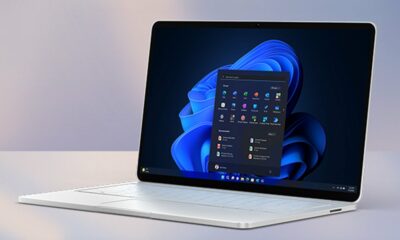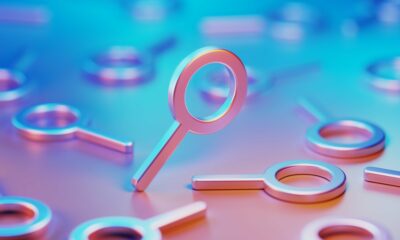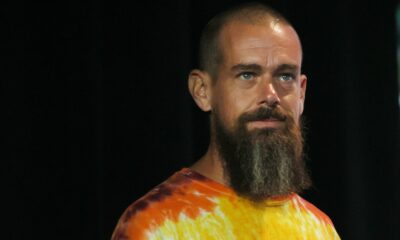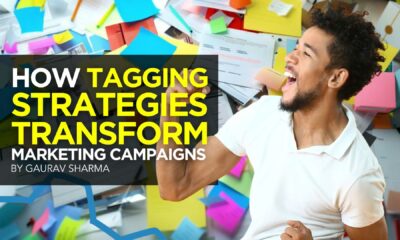SOCIAL
Twitter Will Begin Removing ‘Legacy’ Blue Checkmarks from Next Week
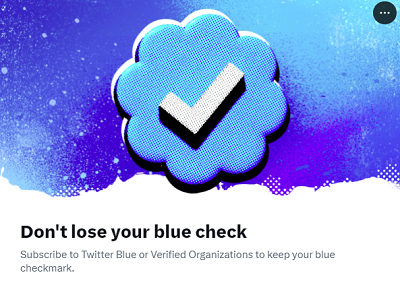
Get ready for the next phase of Twitter 2.0’s subscription revenue push, with the platform announcing today that ‘legacy’ blue checkmarks will begin being revoked as of next week.
On April 1st, we will begin winding down our legacy verified program and removing legacy verified checkmarks. To keep your blue checkmark on Twitter, individuals can sign up for Twitter Blue here: https://t.co/gzpCcwOpLp
Organizations can sign up for https://t.co/RlN5BbuGA3…
— Twitter Verified (@verified) March 23, 2023
As per the above tweet, Twitter’s hoping to boost Twitter Blue and Verification for Business subscribers by prompting them to start paying for their blue tick instead.
Twitter’s also alerting blue tick account holders with this in-stream notification.
That could see some legacy verified accounts paying up, bringing in a few more Twitter Blue subscribers – though the amount that are going to revert to Verification for Business, which costs $1,000 per month, will be far less.
But if Twitter wants to reach its target of 50% of its revenue coming from subscriptions, it needs to take action, because right now, according to analysis, Twitter Blue has around 450k subscribers, which equates to only 0.12% of Twitter’s total user base.
In order to generate 50% of Twitter’s total income, Twitter needs around 24 million users to sign up to the program. So while Twitter Blue is set to bring in more money for Elon and Co. (around $11 million per quarter to be exact), it’s nowhere close to being half of the platform’s intake, which, based on its last revenue report, would be around $590 million every three months.
While it also dilutes the value of the thing that it’s aiming to sell. The problem with selling blue checkmarks, both on Twitter and Facebook, is that you’re charging users for the exclusivity, and the perceived reputational value of having a blue tick, but as soon as anyone can buy it, it’s no longer valuable in this respect.
And as more people sign up, it becomes even less valuable over time, and once Twitter removes the legacy blue ticks, that will mean that the only checkmarks left are those that are attached to accounts that are paying for it, which will make it completely worthless in this respect. At that stage, the blue check is only going to show others that you have enough money to afford it, and that you want to support Elon Musk’s mission to change how Twitter works.
Maybe that has some value in itself, and there are some aspects of Twitter Blue that some users will pay for. Though even then, Twitter’s experimenting with a new option that would enable subscribers to not show their blue tick, if they choose – because even Twitter is moving to acknowledge that it’s not the indicator of reputational or exclusivity that it once was.
And it’ll become less so from next week – while it’s also worth noting that even if every legacy checkmark holder were to sign on to pay $8 per month, and keep their blue tick, that would still only be another 420k extra subscribers, max.
And I suspect many won’t. I suspect, too, that removing the legacy checkmarks will have a negative impact, in that it will see some of those users tweet even less, because they won’t feel as aligned to the platform that has taken away that marker from their account.
This is why selling verification ticks is a flawed strategy, because its growth and expansion dilutes its own value, and undermines the concept of what it is. Sure, Meta’s trying the same thing, but even Meta staff raised this same concern (as did Twitter staff), and Meta at least offers a truly valuable aspect, in providing additional, in-person support for paying subscribers.
But even then, Meta’s approach is also flawed, because you can’t sell reputation, you can’t charge for authority or recognition.
Some will think that’s what they’re getting, but eventually, when they’re the only ones left, I think you’ll find that it’ll be much easier to dismiss blue checkmark accounts in-stream.
It’s a confused approach, which won’t become a significant revenue driver – at least not without some significant additions that are worth paying for. But Twitter’s pushing ahead either way.
Prepare to pay up, or lose your blue tick, from next week.
SOCIAL
Snapchat Explores New Messaging Retention Feature: A Game-Changer or Risky Move?

In a recent announcement, Snapchat revealed a groundbreaking update that challenges its traditional design ethos. The platform is experimenting with an option that allows users to defy the 24-hour auto-delete rule, a feature synonymous with Snapchat’s ephemeral messaging model.
The proposed change aims to introduce a “Never delete” option in messaging retention settings, aligning Snapchat more closely with conventional messaging apps. While this move may blur Snapchat’s distinctive selling point, Snap appears convinced of its necessity.
According to Snap, the decision stems from user feedback and a commitment to innovation based on user needs. The company aims to provide greater flexibility and control over conversations, catering to the preferences of its community.
Currently undergoing trials in select markets, the new feature empowers users to adjust retention settings on a conversation-by-conversation basis. Flexibility remains paramount, with participants able to modify settings within chats and receive in-chat notifications to ensure transparency.
Snapchat underscores that the default auto-delete feature will persist, reinforcing its design philosophy centered on ephemerality. However, with the app gaining traction as a primary messaging platform, the option offers users a means to preserve longer chat histories.
The update marks a pivotal moment for Snapchat, renowned for its disappearing message premise, especially popular among younger demographics. Retaining this focus has been pivotal to Snapchat’s identity, but the shift suggests a broader strategy aimed at diversifying its user base.
This strategy may appeal particularly to older demographics, potentially extending Snapchat’s relevance as users age. By emulating features of conventional messaging platforms, Snapchat seeks to enhance its appeal and broaden its reach.
Yet, the introduction of message retention poses questions about Snapchat’s uniqueness. While addressing user demands, the risk of diluting Snapchat’s distinctiveness looms large.
As Snapchat ventures into uncharted territory, the outcome of this experiment remains uncertain. Will message retention propel Snapchat to new heights, or will it compromise the platform’s uniqueness?
Only time will tell.
SOCIAL
Catering to specific audience boosts your business, says accountant turned coach

While it is tempting to try to appeal to a broad audience, the founder of alcohol-free coaching service Just the Tonic, Sandra Parker, believes the best thing you can do for your business is focus on your niche. Here’s how she did just that.
When running a business, reaching out to as many clients as possible can be tempting. But it also risks making your marketing “too generic,” warns Sandra Parker, the founder of Just The Tonic Coaching.
“From the very start of my business, I knew exactly who I could help and who I couldn’t,” Parker told My Biggest Lessons.
Parker struggled with alcohol dependence as a young professional. Today, her business targets high-achieving individuals who face challenges similar to those she had early in her career.
“I understand their frustrations, I understand their fears, and I understand their coping mechanisms and the stories they’re telling themselves,” Parker said. “Because of that, I’m able to market very effectively, to speak in a language that they understand, and am able to reach them.”Â
“I believe that it’s really important that you know exactly who your customer or your client is, and you target them, and you resist the temptation to make your marketing too generic to try and reach everyone,” she explained.
“If you speak specifically to your target clients, you will reach them, and I believe that’s the way that you’re going to be more successful.
Watch the video for more of Sandra Parker’s biggest lessons.
SOCIAL
Instagram Tests Live-Stream Games to Enhance Engagement

Instagram’s testing out some new options to help spice up your live-streams in the app, with some live broadcasters now able to select a game that they can play with viewers in-stream.
As you can see in these example screens, posted by Ahmed Ghanem, some creators now have the option to play either “This or That”, a question and answer prompt that you can share with your viewers, or “Trivia”, to generate more engagement within your IG live-streams.
That could be a simple way to spark more conversation and interaction, which could then lead into further engagement opportunities from your live audience.
Meta’s been exploring more ways to make live-streaming a bigger consideration for IG creators, with a view to live-streams potentially catching on with more users.
That includes the gradual expansion of its “Stars” live-stream donation program, giving more creators in more regions a means to accept donations from live-stream viewers, while back in December, Instagram also added some new options to make it easier to go live using third-party tools via desktop PCs.
Live streaming has been a major shift in China, where shopping live-streams, in particular, have led to massive opportunities for streaming platforms. They haven’t caught on in the same way in Western regions, but as TikTok and YouTube look to push live-stream adoption, there is still a chance that they will become a much bigger element in future.
Which is why IG is also trying to stay in touch, and add more ways for its creators to engage via streams. Live-stream games is another element within this, which could make this a better community-building, and potentially sales-driving option.
We’ve asked Instagram for more information on this test, and we’ll update this post if/when we hear back.
-

 PPC5 days ago
PPC5 days agoHow the TikTok Algorithm Works in 2024 (+9 Ways to Go Viral)
-

 MARKETING6 days ago
MARKETING6 days agoA Recap of Everything Marketers & Advertisers Need to Know
-

 SEO6 days ago
SEO6 days agoBlog Post Checklist: Check All Prior to Hitting “Publish”
-

 SEO4 days ago
SEO4 days agoHow to Use Keywords for SEO: The Complete Beginner’s Guide
-

 MARKETING5 days ago
MARKETING5 days agoHow To Protect Your People and Brand
-

 SEARCHENGINES6 days ago
SEARCHENGINES6 days agoGoogle Started Enforcing The Site Reputation Abuse Policy
-

 PPC6 days ago
PPC6 days agoHow to Craft Compelling Google Ads for eCommerce
-

 MARKETING6 days ago
MARKETING6 days agoElevating Women in SEO for a More Inclusive Industry


